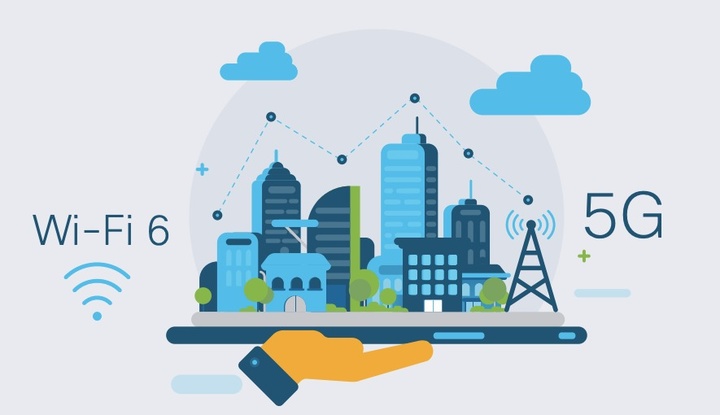This year is recognized as the first year of 5G commercial use. The Ministry of Industry and Information Technology issued 5G licenses. In addition to Apple, mainstream mobile phone manufacturers are rushing to launch 5G mobile phones.
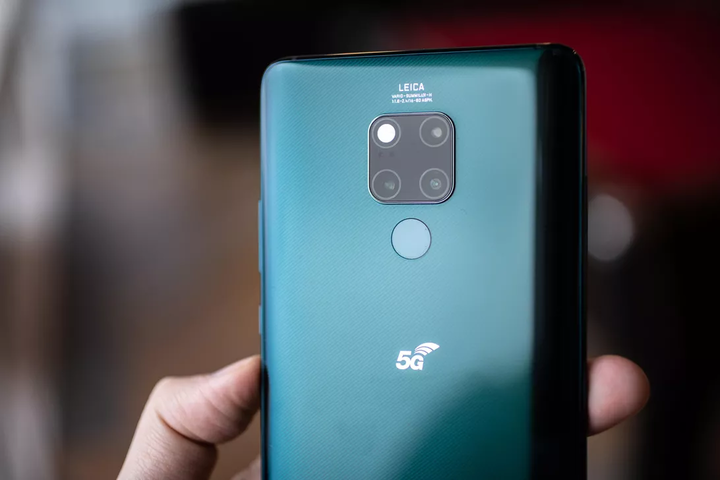
Although 5G base stations are not yet popular, 5G packages are still very expensive, and there are not many people who buy 5G mobile phones, but 5G is still considered to be an important communication technology in the future. Many people will not have a 5G suspension plan because of the iPhone 11 series.
Compared to 5G, Wi-Fi, the communication technology we use every day, not so much people pay attention, Wi-Fi has also recently ushered in important milestones.
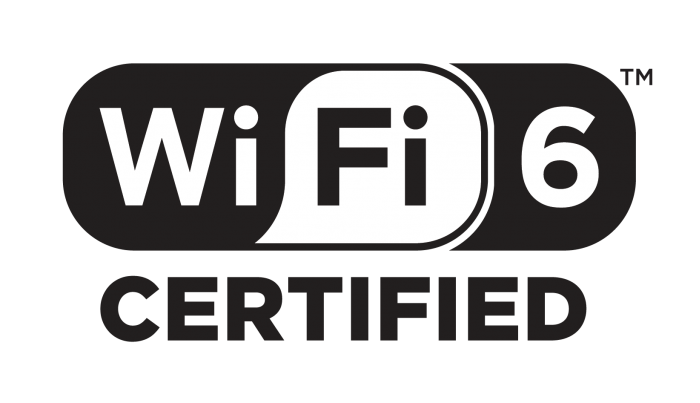
September 17, Wi-Fi Alliance Declares the launch of the Wi-Fi 6 certification program, which means that a new generation of Wi-Fi is about to enter our lives, and its impact may be no less than 5G.
How much is Wi-Fi 6?
In September 1999, the Institute of Electrical and Electronics Engineers (IEEE) successfully created 802.11b standard, which increases the transmission rate of wireless Ethernet to 11 Mbit/s, which officially marks Wi-Fi Birth of the child.
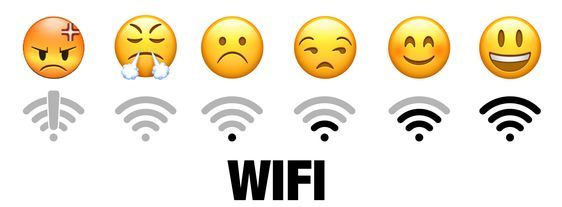
Twenty years later, Wi-Fi has become a necessity in life like hydropower. The strength of the Wi-Fi signal even determines our emotional state.
Unlike the mobile network from 2G to 5G, although Wi-Fi has evolved to the sixth generation, we seem to feel little significant changes like moving from 3G to 4G, then what is Wi-Fi 6? How is it different from the Wi-Fi we use now?
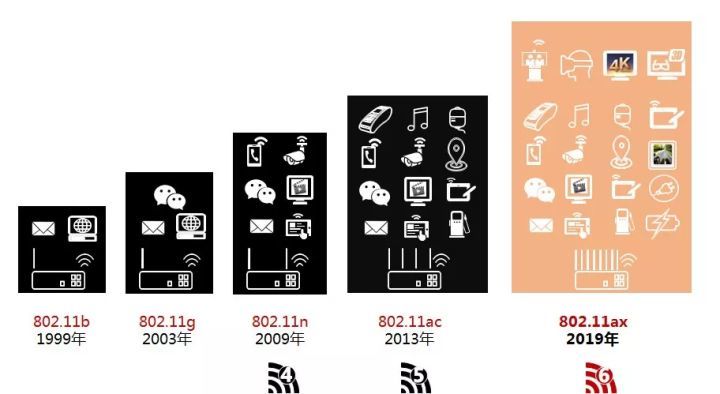
Like 5G, the most intuitive change that Wi-Fi 6 brings is the speed of the network. The highest transfer rate is 9.6 Gbps, which is equivalent to 1.2GB / s download speed, which is 40% faster than the previous generation Wi-Fi speed.
And 5G has a peak rate of 10 Gbps, which means Wi-Fi 6 has a network speed comparable to 5G.

▲Image from: wired
But the faster internet speed is not the biggest highlight of Wi-Fi 6. In office and some public places, Wi-Fi tends to be very slow due to too many people, and Wi-Fi 6 has been greatly improved. This problem.
From the perspective of specific effects, Wi-Fi 6 can increase the transmission rate of each device after multiple devices are connected. This is not only because the network speed is increased, but the total amount is increased, so the average network speed to each device is More, but let the access to dozens of devices and maintain the same speed when accessing one.

▲ Image from: Giphy
How did this happen? This involves many techniques such as OFDMA (Orthogonal Frequency Division Multiple Access), MU-MIMO, and 1024QAM, but you don’t have to remember the technical terms of these ports. Just know that these are also key technologies of 5G.
OFDMA is a technology that can improve the efficiency of data transmission. It is not difficult to transmit data. It is difficult to maintain high-speed transportation when the data is crowded like the morning peak of Guangzhou Metro Line 3.

If you think of Wi-Fi data transmission as a subway manned, if there are 3 teams in the past to take the subway, you must use three subways to transport each team separately, even if there is only one person in the team. It’s too wasteful to monopolize a subway.
And you have to start in order, which means you have to wait for a trip after the subway is gone. The more people wait, the longer it will be. This is why the speed of the network is slow when multiple people use Wi-Fi at the same time. The important reason.

While Wi-Fi 6 optimizes the transportation efficiency of the subway, there are 9 rows of seats on the subway, so that all three teams can get on the subway first, so that each subway can be set up and then set off, and will be faster. All passengers are sent to their destination.
Another technology to enhance the experience of multiplayer Internet access is MU-MIMO. In the past, the SU-MIMO router was centered on itself and transmitted signals 360°. If there is 100 M bandwidth, 3 devices simultaneously Access, each device can only be allocated to 33.3 M, so the more devices, the slower the network speed.

And MU-MIMO can get 100 M bandwidth for all 3 devices, which is equivalent to 3 times the transmission rate under the same bandwidth. The more devices connected, the more efficient the improvement. .
In a nutshell, broadband is like a highway, and the access device is the car that drives on it. In the past, all cars can only take one lane, and Wi-Fi 6 allows each car to have an exclusive lane, and each car can travel at the fastest speed.
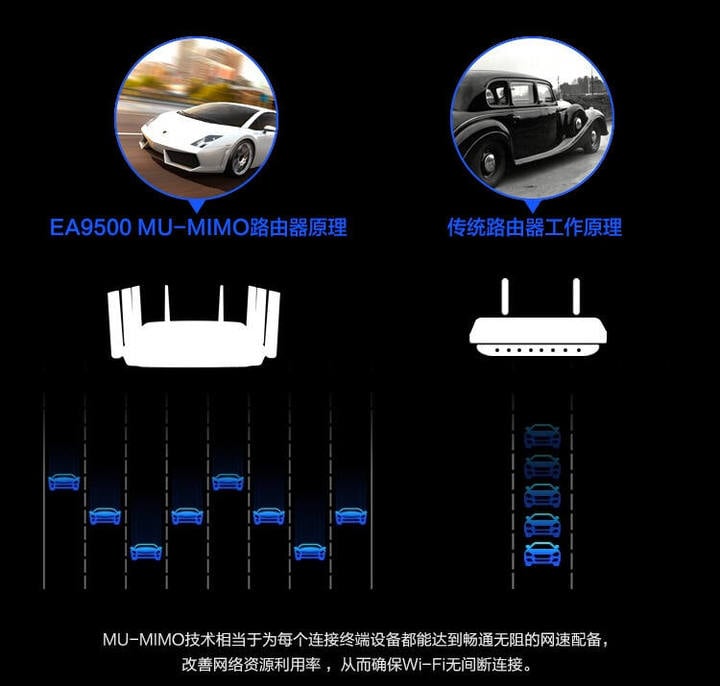
▲ Image from: Jingdong
In addition, Wi-Fi 6 reduces latency from 30ms to 20ms in the previous generation, while reducing battery consumption and improving battery life in terminal devices, but these upgrades bring changes in the home for a short period of time. It may not be obvious.
But all of the above features make Wi-Fi 6 no longer just a communication technology that doesn’t require your own traffic.
In addition to faster Internet access, what is the use of Wi-Fi 6?
Like the current 5G, in addition to faster Internet speeds, it is difficult for consumers to tell what has changed, but whether it is 5G or Wi-Fi 6, the change in life is far more than just letting us go online faster.
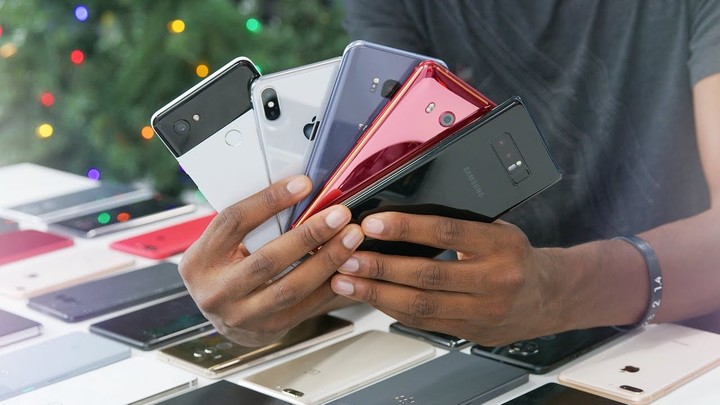
▲Image from: Perusmart
When smartphone growth is stagnant, vendors are looking for the next disruptive product (Next Big Thing). In fact, there may not be a separate “Big Thing” like a mobile phone in the future. The real Next Big Thing may be IoT-based Internet of Everything.
This is also the direction of mobile phone manufacturers such as Apple, Huawei and Xiaomi. With the increasing number of IoT devices such as smart homes, it is very important to stabilize high-speed wireless networks.
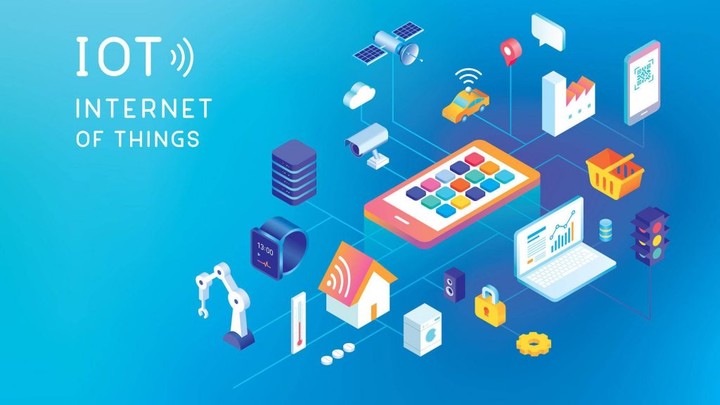
For example, 4K network video requires a single terminal to have at least 50 M of bandwidth, while 8K video requires 100 M. When there are more than a dozen such devices running at the same time, such as enterprise video conferencing, existing Wi- Fi is hard to support.
It may not be possible now, but as 4K and 8K become mainstream video resolutions, Wi-Fi 6 will replace the current Wi-Fi in the near future. In addition to the family, in large-scale events such as sports events and concerts, there will be no more cases where Wi-Fi cannot be connected because there are too many users.

2019 is actually the first year of commercial use of Wi-Fi 6. In July of this year, the country’s first Wi-Fi 6 subway was built in Shenzhen Futian, using Huawei’s Wi The -Fi 6 technology, through the Unicom 5G network access, these two new communication technologies have finally produced an intersection.
The VR/AR field, which has strong demand for high-bandwidth, will also benefit from it. Wi-Fi 6’s high transmission rate and low latency can better reduce dizziness and discomfort caused by unclear video images. Run the content in the cloud to reduce the weight of the head-mounted device.
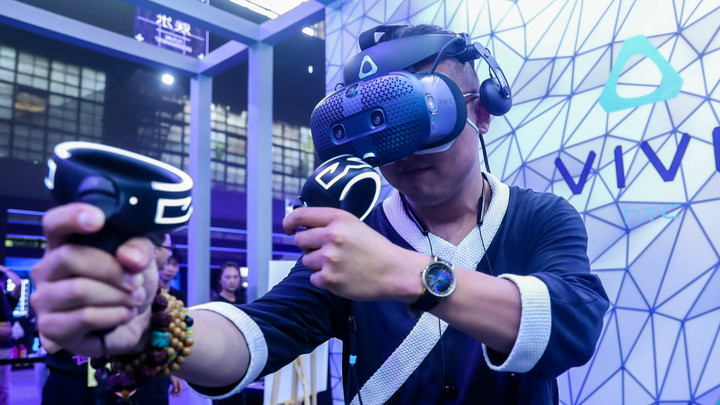
Although last year’s VR/AR shipments were only about 10 million units, according to industry analyst firm ABI Research, global VR/AR shipments will increase to 250 million units in 2025, resulting in a value of $292 billion. market.
In fact, Wi-Fi itself is a market with great business value, according to a Research report, the global WiFi economy value in 2018 is close to $2 trillion, far exceeding the smartphone market, and the report is expected to be 2023. It will reach $3.47 trillion.
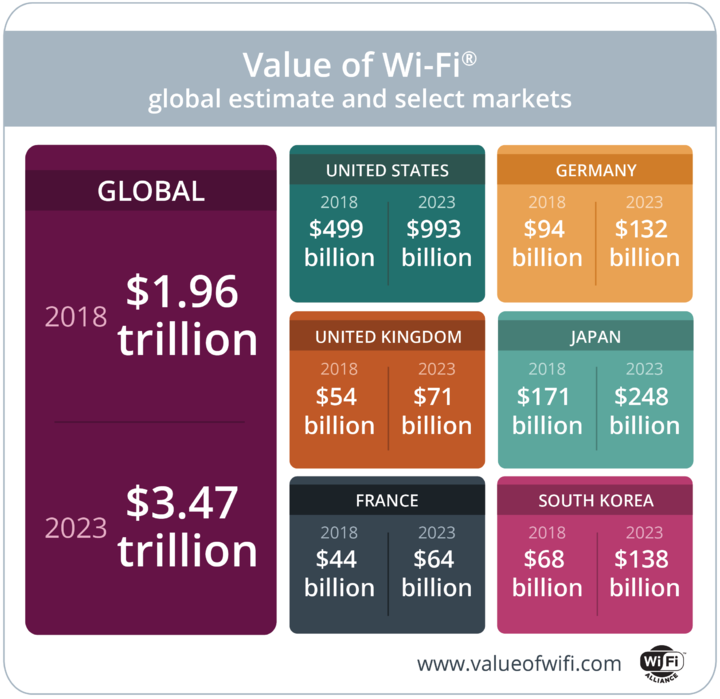
A large part of the incremental market for Wi-Fi in the next few years may be due to more scenarios expanded by WiFi 6. In addition, according to well-known accounting firm KPMG calculation, the potential value of the global 5G market is 43,000. One hundred million U.S. dollars. That is to say, 5G and WiFi 6 are the two most popular communication technologies in the future.
This means that soon, major vendors will use WiFi 6 as a standard for all devices, just like grabbing 5G terminals.
When can I use WiFi 6?
Although Wi-Fi 6 is already commercially available, it is difficult for most individual users to experience this technology. In addition to the iPhone 11 series and the Samsung Galaxy S10 Plus, most smartphones do not currently support Wi-Fi 6.
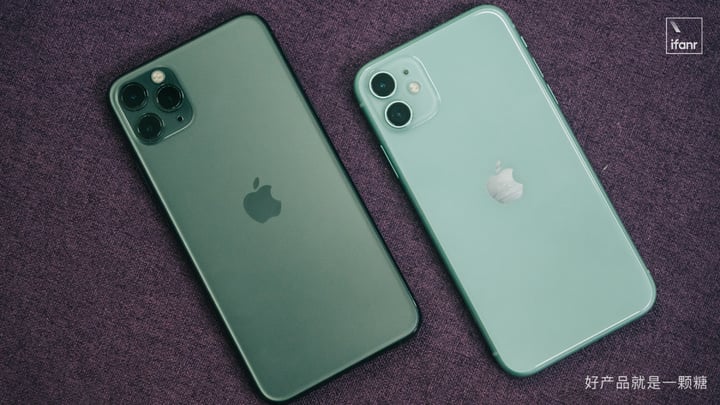
There are a lot of routers that support Wi-Fi 6, but the price is as high as two or three thousand. These Wi-Fi 6 routers are very tasteless when there are not many smart devices supporting Wi-Fi 6.
In addition, although Wi-Fi 6 can theoretically reach a peak rate of 9.6 Gbps, the premise is that 1000 M broadband is required. The price of such a home broadband package is basically more than 1,000 yuan per month, and most families will not Experience Wi-Fi 6 to purchase such a package.
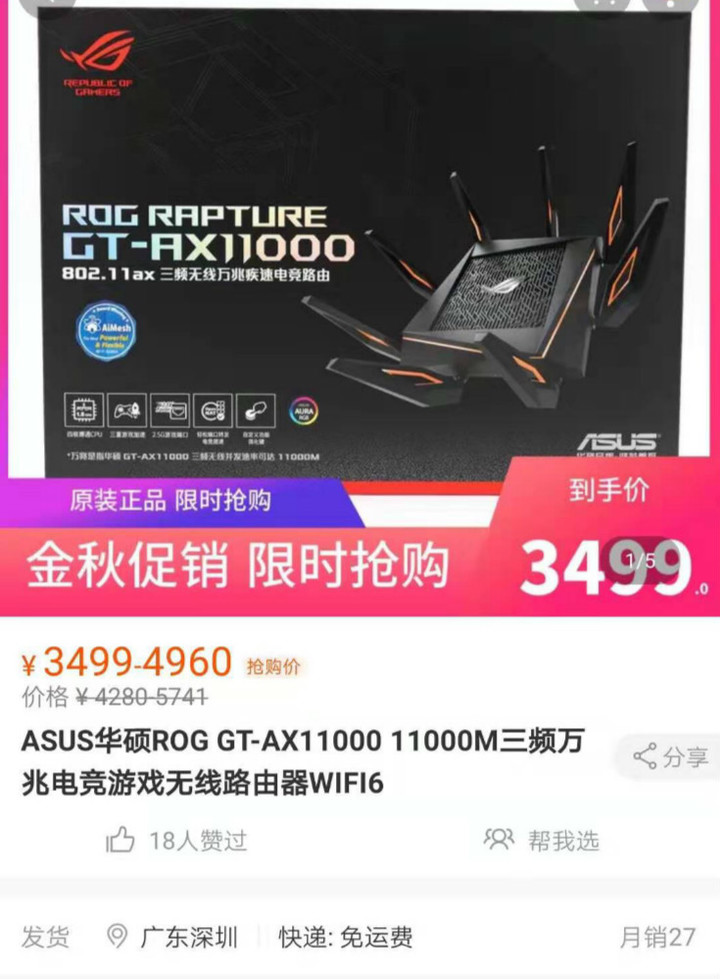 < /p>
< /p>
As mentioned earlier, in the Wi-Fi 6 environment, the more connected devices, the more obvious the rate increase, which has advantages and disadvantages. Even if there are three or four devices in the home to broadcast 4K network video at the same time, now 200 M broadband can be satisfied, only such devices can be more than a dozen or more, and the advantages of Wi-Fi 6 will be reflected.
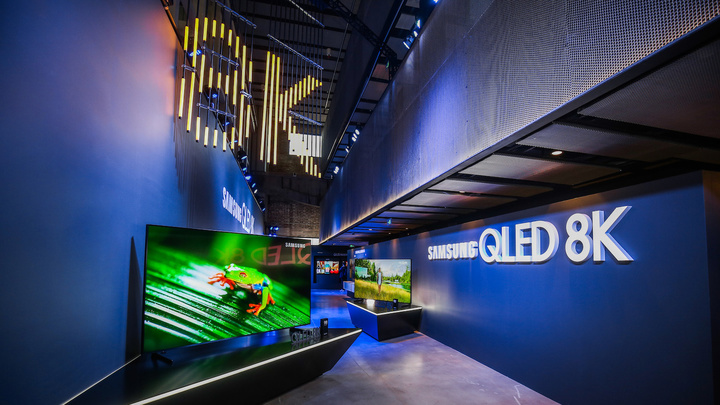
At a time when smart homes are still not popular, most people don’t have as many high-bandwidth networking devices as they need, which makes Wi-Fi 6 useless.
As with 5G, Wi-Fi 6 will not be widely available in the consumer market until the relevant costs have come down and enough devices are supported. More applications will start with the enterprise market.
But we may not need to wait too long, according to IDC’s forecast, the popularity of Wi-Fi 6 will be completed by 2023.
5G and WiFi, who can’t replace anyone
As mentioned above, both 5G and WiFi 6 are based on the same key technology. Increasing the transmission rate and low latency are important features, which makes the two communication technologies seem to have a bit of competition.
According to data from the Wi-Fi Alliance, more than half of the world’s data is transmitted over Wi-Fi. But after the emergence of 5G, few people began to guess whether 5G would replace Wi-Fi.
